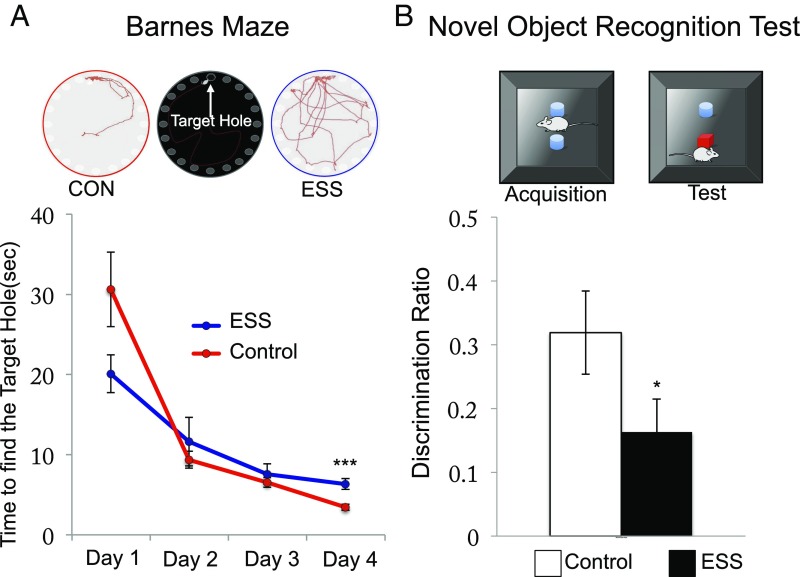Fig. 4.
Results of (A) Barnes maze (BM) test and (B) novel object recognition test (NORT). A shows differences in search strategies on the test day of the BM for control (CON) (red) and excessive sensory stimulation (ESS) (blue). Learning throughout the 4-d training trials is depicted in terms of the time to find the target hole for CON and ESS. ESS mice trend toward finding the target hole faster than CON on day 1 (effect of hyperactivity) [mean ± SEM; CON, 30.60 ± 4.64, n = 12; ESS, 20.08 ± 2.35, n = 10; t(16) = 1.80, P < 0.09] but spent significantly more time on day 4 to find the target hole [mean ± SEM; CON, 3.44 ± 0.39, n = 12; ESS, 6.33 ± 0.67, n = 10; t(15) = 5.24, P < 0.001]. B illustrates the NORT and the results of the discrimination ratio on the test trial. The discrimination ratio was calculated as follows: (time spent on the novel object – time spent on the familiar object)/total time. ESS mice spent less time with the novel object compared with CON [mean ± SEM; CON, 0.32 ± 0.07, n = 39; ESS, 0.16 ± 0.05; n = 42; t(70) = 1.99, P < 0.05]. Error bars in graphs represent the SEM of variability within each group. Significance was determined using a two-tailed t test. Note: *P < 0.05; ***P < 0.001. Adapted with permission from ref. 119.

